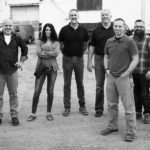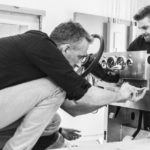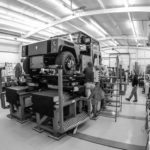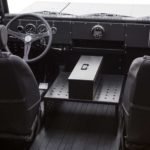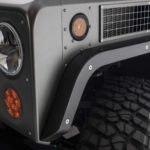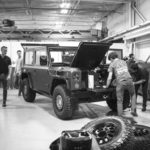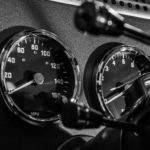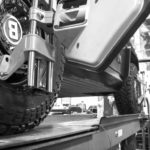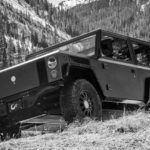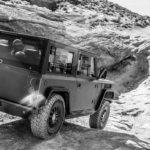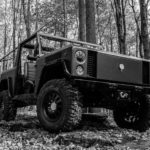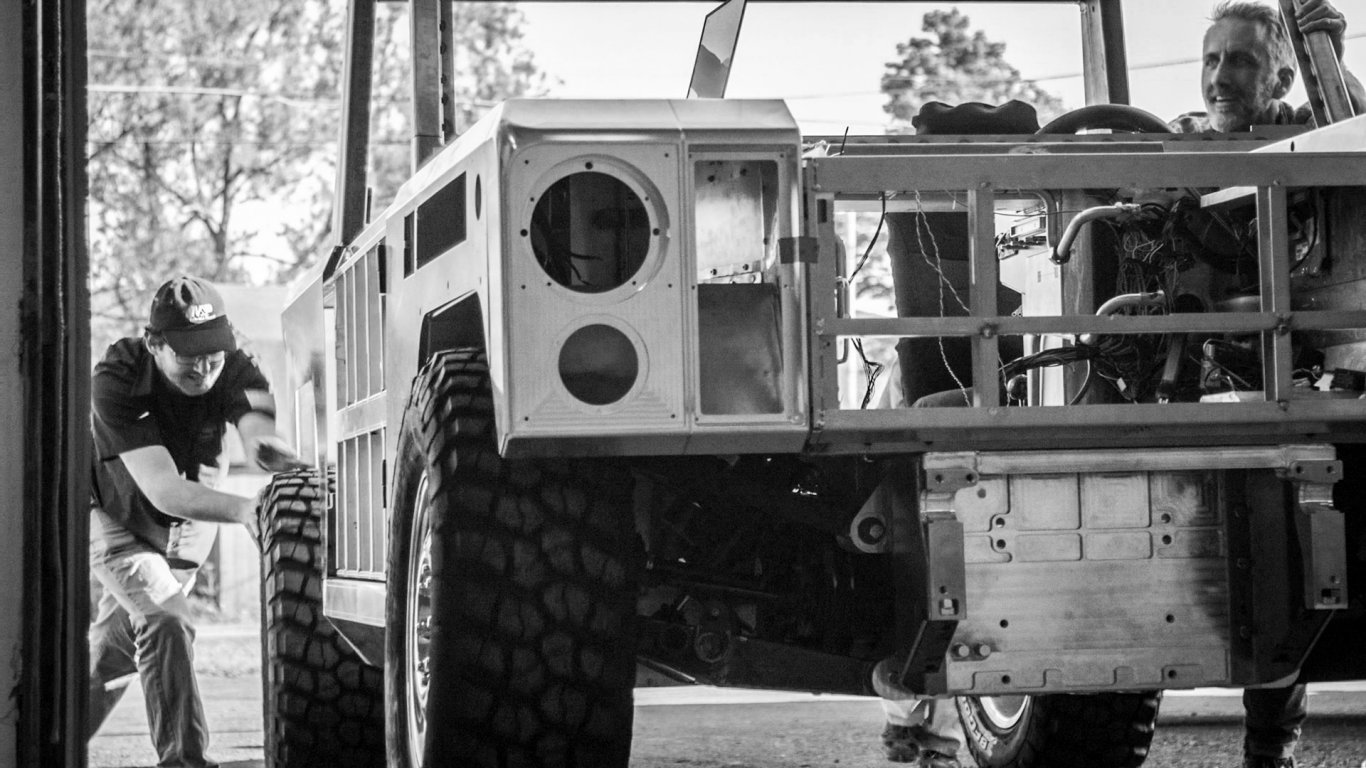
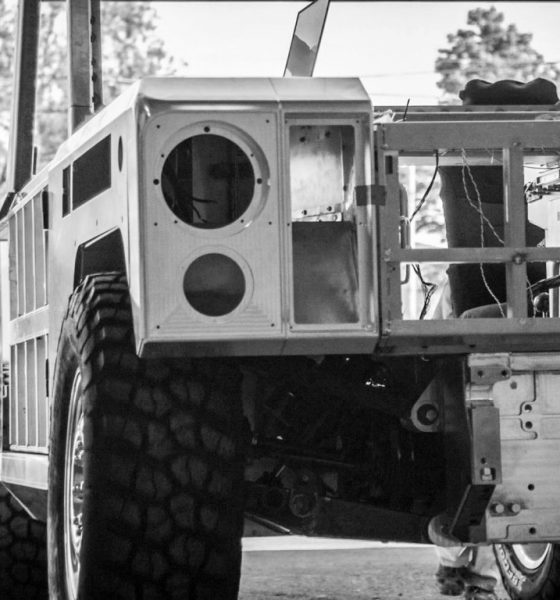
Lifestyle
From Tesla shareholder to startup CEO: How Robert Bollinger is bringing utility to the EV market
On a rather chilly morning a few days before Christmas, Bollinger Motors CEO Robert Bollinger indulged my request for a short interview about his longtime support for electric vehicles. Speaking through FaceTime, Robert animatedly talked about Bollinger Motors’ highly anticipated Sports Utility Truck, his thoughts about other EV makers targeting the trucking segment, and even his experiences as a Tesla shareholder.
Robert Bollinger graduated from Carnegie Mellon University with a degree in Industrial Design. After working for a series of ad agencies, he started a 15-year stint at John Masters Organics, where he served as COO and CMO. Later on, Robert co-started a grass-fed cattle farm, and while working in the fields, he saw the need for a better truck — one that is not being made by the world’s premier carmakers.
Years before he started Bollinger Motors in 2014, Robert Bollinger found himself very impressed by a small startup electric car company from Silicon Valley. Having had a soft spot for EVs for years, his attention was immediately piqued by the release of the original Tesla Roadster and the Model S sedan. That said, his work on the fields meant that a sedan or a sports car did not really fit his needs. Nevertheless, he opted to support Tesla, just in another way.
“When Tesla first came out, when they had the Roadster and Model S, I was hoping to buy one. I didn’t have a car — I had my truck. (The Roadster and the Model S) never quite fit my particular needs, but I bought (TSLA) stock soon after they went public. Over the years, I just kept buying,” he said.
Being a shareholder of Tesla, Robert is all too familiar with the activities of the company’s critics, particularly those of short-sellers. When asked how he handled the stream of negativity consistently being thrown towards Tesla, Robert simply remarked that he “just kept buying.” Against the noise from the company’s most passionate naysayers, “I just kept riding it up,” he said.
- (Photo: Bollinger Motors)
- (Photo: Bollinger Motors)
- (Photo: Bollinger Motors)
Robert Bollinger and his team with their first vehicle, the B1 Sports Utility Truck. (Photo: Bollinger Motors)
With Tesla disrupting the automotive industry, Robert decided in 2014 to start his electric vehicle startup. Operating under the name Bollinger Motors, the startup opted to create a vehicle that is designed and built around utility. It would be, in a lot of ways, the truck that Robert always wanted when working in the fields. It would be tough, it would operate in rough terrain, and most of all, it would be all-electric.
“I always believed in electric. If you want to start a startup now, it has to be electric.”
The result of Robert and his small team’s work is the Bollinger B1, a vehicle the company dubs as a “Sport Utility Truck.” The B1 is arguably the most utility-focused EV that has been unveiled so far, with its Land Rover Defender-esque panels, its 33-inch tires, and its 15-inch ground clearance. The interior of the B1 echoes the design of classic utility vehicles too, with analog gauges dominating the dashboard. The company is also planning the B2, a pickup truck it intends to unveil in the near future. Overall, Robert notes that the B1 and B2 are created to push the envelope on utility vehicles, particularly as SUVs and trucks nowadays are mostly focusing on factors such as luxury and comfort.
“Compared to sedans, SUVs and pickup trucks, they haven’t really evolved that much. They get more luxurious, but they never get drastically more capable. For example, their ground clearance generally has not improved. It’s not really until you go drastic such as going electric that you see how much you can do,” Robert said.
While the B1 has attracted a notable amount of interest since it was unveiled earlier this year (there are now around 28,000 reservations for the vehicle), other electric car companies are breaching the pickup truck market as well. Fellow EV startup Rivian, for one, recently unveiled the R1T pickup truck and the R1S SUV, and Elon Musk has mentioned on Twitter that he is “dying to make” Tesla’s pickup truck. Musk even noted that a prototype of the upcoming vehicle might be unveiled as early as next year.
- (Photo: Bollinger Motors)
- (Photo: Bollinger Motors)
- (Photo: Bollinger Motors)
The Bollinger B1 is designed from the ground up as a utility vehicle. (Photo: Bollinger Motors)
Despite the emergence of pickup trucks and SUVs from larger, more established competitors, the Bollinger Motors CEO stated that he believes the market will be large enough for everyone. Even with legacy carmakers shifting their trucks to hybrids or all-electric vehicles, Robert believes that there will be consumers whose needs would be fulfilled perfectly by the B1 and the B2. In this light, the EV enthusiast notes that he welcomes the arrival of more electric and electrified trucks.
“At some point, there will be electric jeeps. There will be electric trucks from many carmakers. When we’re creating our own version of the vehicle, we have our own DNA; we have our own setup and specs. A lot of the legacy companies, when they finally come towards electric, they’re gonna have EV versions of what they have now. The first hybrid F-150 will have the existing architecture.
“Rivian’s extremely different than us. It’s more mainstream, more luxury — and that’s great. That’s their market, but it’s not ours. I’m sure when Tesla comes out with their pickup truck, it’ll be great. But we’re still going to be different. I’m just happy that there are more electric cars. I applaud them for doing a great job, and I believe that we can co-exist very nicely.”
One of these differences is in the way Bollinger is going about the manufacturing of the B1 and the B2. Tesla, for one, is developing and creating much of their vehicles’ components in-house. This, according to Robert, is strategic for Tesla considering the company’s size. For a much smaller startup like Bollinger, though, Robert noted that another approach was needed.
“Tesla and everybody else is going about things differently than we are. They raised hundreds of millions of dollars to acquire what they need. Whereas, we are more coming from the angle of hand-built, small team, low overhead. We’re growing from the handcrafted side of things if you will. We’re growing more organically, growing as we need to grow. We’re at a small space for prototyping right now because that’s what we need,” he said.
- (Photo: Bollinger Motors)
- (Photo: Bollinger Motors)
The Bollinger B1 echoes the design elements of classic off-road vehicles like the Land Rover Defender. (Photo: Bollinger Motors)
So far, Bollinger has moved to a larger headquarters in Detroit. Robert notes that this was a strategic decision since it allows the company to be close to vendors and a healthy talent pool. The B1 is also being refined as the company prepares to start producing the vehicle. When asked if he thinks Bollinger will experience its version of “production hell” once it begins manufacturing the B1, Robert candidly remarked that he is saving all the hell for 2019, when things will likely go really crazy.
With his background as a longtime EV supporter and TSLA shareholder, I asked Robert if he opted to use any of Tesla’s open-sourced patents when Bollinger Motors was developing the B1. The CEO notes that they didn’t find a need to tap into Tesla’s patents since Bollinger is not making its own electric motors or batteries. Due to the company’s size, Robert notes that he and his team are not trying to reinvent all the components of electric vehicles. Instead, it is more preferable for the company to rely on partnerships with vendors instead, particularly as there’s less overhead.
That said, the Bollinger B1 and Bollinger B2 do have similarities with Tesla’s Model 3 in terms of battery technology. Robert remarked that he and his team talked with about five battery providers to evaluate and test which types of cells would be best for the B1 and B2. After a long list that included pouch cells and prismatic cells from several manufacturers, Robert noted that they ultimately decided to settle on 2170 cells.
“Long list of battery scenarios, the 2170 cell just rose to the top. It just gave the most energy density,” he said.
- (Photo: Bollinger Motors)
- (Photo: Bollinger Motors)
- (Photo: Bollinger Motors)
- (Photo: Bollinger Motors)
The Bollinger B1 in its natural habitat. (Photo: Bollinger Motors)
Just like Tesla’s electric cars, most of the Bollinger B1 and B2’s components are locally produced. Robert admits that there are critical components for his electric vehicles that are made elsewhere, but Bollinger is attempting to get them licensed for production in the United States. Once produced, Bollinger aims to bring its vehicles to customers across the globe. Robert noted that an RHD version of the B1 and B2 could be produced without much complexity too, thanks to the vehicles’ straightforward design.
The Bollinger B1 and B2 are equipped with J1772 and CCS ports. Back in August, and not long after Elon Musk mentioned that Tesla is not restricting other EV makers from accessing its charging infrastructure, Robert posted a tweet to Elon Musk, asking if Bollinger’s vehicles can use the Supercharger Network. The CEO noted that he didn’t really expect a response since he asked through social media, but as the B1 and B2 close in on production, there is a good chance that he might request Elon Musk for Supercharger access once more.
“I only asked them through a tweet, so I didn’t really expect a response. But as we finalize more things, we might come back to that. But we got so many people, Tesla fans, that were rooting for us. I appreciate that,” he said.

Lifestyle
Tesla Model S Plaid battles China’s 1500 hp monster Nurburgring monster, with surprising results
There is just something about Tesla’s tuning and refinement that makes raw specs seem not as game-changing.

The Tesla Model S Plaid has been around for some time. Today, it is no longer the world’s quickest four-door electric sedan, nor is it the most powerful. As per a recent video from motoring YouTube channel Carwow, however, it seems like the Model S Plaid is still more than a match for some of its newer and more powerful rivals.
The monster from China
The Xiaomi SU7 Ultra is nothing short of a monster. Just like the Model S Plaid, it features three motors. It also has 1,548 hp and 1,770 Nm of torque. It’s All Wheel Drive and weighs a hefty 2,360 kg. The vehicle, which costs just about the equivalent of £55,000, has been recorded setting an insane 7:04.957 at the Nurburgring, surpassing the previous record held by the Porsche Taycan Turbo GT.
For all intents and purposes, the Model S Plaid looked outgunned in Carwow’s test. The Model S Plaid is no slouch with its three motors that produce 1,020 hp and 1,420 Nm of torque. It’s also a bit lighter at 2,190 kg despite its larger size. However, as the Carwow host pointed out, the Model S Plaid holds a 7:25.231 record in the Nurburgring. Compared to the Xiaomi SU7 Ultra’s record, the Model S Plaid’s lap time is notably slower.
Real-world tests
As could be seen in Carwow’s drag races, however, Tesla’s tech wizardry with the Model S Plaid is still hard to beat. The two vehicles competed in nine races, and the older Model S Plaid actually beat its newer, more powerful counterpart from China several times. At one point in the race, the Xiaomi SU7 Ultra hit its power limit due to its battery’s temperature, but the Model S Plaid was still going strong.
The Model S Plaid was first teased five years ago, in September 2020 during Tesla’s Battery Day. Since then, cars like the Lucid Air Sapphire and the Xiaomi SU7 Ultra have been released, surpassing its specs. But just like the Model Y ended up being the better all-rounder compared to the BYD Sealion 7 and the MG IM6, there is just something about Tesla’s tuning and refinement that makes raw specs seem not as game-changing.
Check out Carwow’s Model S Plaid vs Xiaomi SU7 drag race video below.
Lifestyle
500-mile test proves why Tesla Model Y still humiliates rivals in Europe
On paper, the BYD Sealion 7 and MG IM6 promised standout capabilities against the Model Y.

BYD is seeing a lot of momentum in Europe, so much so that mainstream media has taken every opportunity to argue that the Chinese automaker has beaten Tesla in the region. But while BYD sales this year in Europe are rising and Tesla’s registrations remain challenged, the raw capabilities of vehicles like the Model Y are difficult to deny.
This was highlighted in a 500-mile challenge by What Car? magazine, which showed that the new Tesla Model Y is more efficient, cheaper to run, and more reliable than rivals like the BYD Sealion 7, and even the nearly 400 KW-charging MG IM6.
Range and charging promises
On paper, the BYD Sealion 7 and MG IM6 promised standout capabilities against the Model Y. The Sealion 7 had more estimated range and the IM6 promised significantly faster charging. When faced with real-world conditions, however, it was still the Model Y that proved superior.
During the 500-mile test, the BYD nearly failed to reach a charging stop, arriving with less range than its display projected, as noted in a CarUp report. MG fared better, but its charging speeds never reached its promised nearly-400 kW charging speed. Tesla’s Model Y, by comparison, managed energy calculations precisely and arrived at each stop without issue.
Tesla leads in areas that matter
Charging times from 25% to 80% showed that the MG was the fastest at 17 minutes, while Tesla and BYD were close at 28 and 29 minutes, respectively. Overall efficiency and cost told a different story, however. The Model Y consumed 19.4 kWh per 100 km, compared to 22.2 for MG and 23.9 for BYD. Over the full trip, Tesla’s charging costs totaled just £82 thanks to its supercharger network, far below BYD’s £130 and MG’s £119.
What Car? Magazine’s testers concluded that despite BYD’s rapid sales growth and the MG IM6’s seriously impressive charging speeds, Tesla remains the more compelling real-world choice. The Model Y just offers stability, efficiency, and a proven charging infrastructure through its Supercharging network. And as per the magazine’s hosts, the Model Y is even the cheapest car to own among the three that were tested.
Watch What Car? Magazine’s 500-mile test in the video below.
Lifestyle
Tesla Cybertruck slapped with world’s least intimidating ticket, and it’s pure cringe
One cannot help but cringe and feel second-hand embarrassment at the idea of a person just driving around with a stack of these babies.

A Cybertruck parked at Stanford Shopping Center in California was recently hit with what might be the most try-hard piece of paper ever slipped under a wiper blade: a “fake citation” accusing the driver of supporting a “fascist car.”
The note, shared on X by Tesla staff program manager Ryan Torres, quickly made the rounds on X, where it quickly gained attention as an example of how not to protest.
The world’s least intimidating ticket
According to the citation, the supposed “violation” was “driving a fascist car.” The remedial action? Take the bus, call an Uber, or ride a bike. The note also dubbed Elon Musk a “chainsaw-wielding Nazi billionaire.” Now, protests against Tesla and Elon Musk have become commonplace this year, but one cannot help but cringe and feel second-hand embarrassment at the idea of a person just driving around with a stack of fake anti-Tesla/Musk citations.
Torres pointed out the irony himself in his post on X. Tesla currently employs over 140,000 Americans, and SpaceX has put the U.S. firmly back at the top of space technology. As Torres put it, maybe the person behind the world’s least intimidating ticket should “read a book on innovation before vandalizing” other people’s property.
Peak performative clownery
Not to mention that the fake ticket’s logic collapses under its own weight. EVs like the Cybertruck are literally designed to reduce emissions, not “destroy the economy.” If anything, Tesla has bolstered the United States’ economy by fueling jobs in engineering, manufacturing, and clean energy. It’s not the first time a Tesla has been the target of vandalism or politically charged notes, but this one stands out for sheer cringe value.
Torres summed it up neatly: “Peak clownery.” On that point, at least, the citation earns full marks. In a way, though, perhaps cringe fake tickets are not as bad as the literal firebombs that were being thrown at Tesla stores and cars earlier this year because some critics were gleefully misinformed about Elon Musk.
